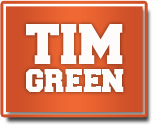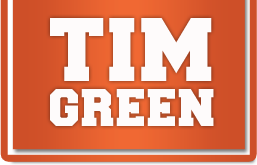A new generation of frank novels for teens and preteens aims to do what Judy Blume has done for generations of girls
By Erin Geiger Smith
March 20, 2017 12:41 p.m. ET
“Spurt,” a book for boys 11 to 14, is filled with frank talk about exactly what’s happening to the main character’s young body. The reverse side of its eye-grabbing, pimples-and-all jacket features a dark blue cover for a different, fake book, a nod to the notion a young reader may prefer his friends think he’s reading up on hot-air balloon disasters.
The book, by Australian author Chris Miles and released in February in the U.S., is just one example of a popular and expanding genre of novels for adolescent and preteen boys. They recall the way Judy Blume entertained, comforted and informed generations of young girls.
These new stories reflect the humor and complications of boys’ lives as they truly know them and present fully formed, nuanced characters of both sexes, say booksellers, authors and educators.
In the past, such novels were “more likely to be picked up by girls, and shared between girls, too,” says Liz Kotin, content director at Brightly, a reading resource website for parents run by publisher Penguin Random House. While Harry Potter and Percy Jackson broadened the idea of boys at the center of novels, Ms. Kotin says, these newer offerings put boys in the forefront differently. They deal mostly in reality and dig into boys’ daily experiences.
Books published since 2016 include Richard Peck’s “The Best Man,” about a young boy searching for male role models; Kwame Alexander’s “Booked,” a sports-related story written in verse; Jake Gerhardt’s “Me and Miranda Mullaly,” a story with three male protagonists that talks about crushes from the boys’ point of view; and “Going Where It’s Dark,” by Phyllis Reynolds Naylor, about a young boy with a stutter dealing with bullying.The real cover art of ‘Spurt,’ by Chris Miles. The book, which focuses on puberty, also has a fake jacket, below, for readers embarrassed by the topic.
Jason Reynolds’s “As Brave as You” was one of his two entries on the Chicago Public Library’s 2016 list of best new titles for third through eighth graders. It’s a book that Chicago library staff member Liv Hanson handed to a reluctant 9-year-old reader.
“There was something about [main character] Genie’s questioning process and the early mention of dog poop that really captured his attention,” Ms. Hanson says, laughing. He read the first chapter immediately, checked it out and loved the whole thing. “His mother is still thanking me.”
Mr. Reynolds has written or co-written five novels in about three years, including some for older adolescents and young teen readers.
He says he’s regularly asked about a scene in his first novel, “When I Was the Greatest.” It involves a boy at a high school party “in a backroom, with a young lady,” as Mr. Reynolds describes it, with the boy “scared and saying to himself, ‘I’m not ready.’ ”
“It’s OK to tell everyone you were afraid and didn’t do it,” Mr. Reynolds says. “We’ve always been told to pretend as if we’re not afraid. I want to air it out and let all the young men off the hook.”
Novels with these themes existed before, but the massive success of R.J. Palacio’s 2012 “Wonder,” about a grade-school boy with facial disfigurement, encouraged authors to see “more of an opening to be able to write stories for boys that allow their characters to feel in different ways,” says Brein Lopez, manager of Children’s Book World, a Los Angeles bookstore.
Authors are also more likely to include strong female characters in books on subjects that appeal to boys, including books about sports, Mr. Lopez says. He cites “Booked,” which follows a young soccer player with troubles at home and a crush on a girl.
Thoughtful and clever female characters are a priority for author and former professional football player Tim Green, who joined ex-baseball star Derek Jeter to write “Baseball Genius,” released in March and already a best seller. In the book, introspective middle-schooler Jalen’s propensity for math and love of sports combine to help save the career of an aging baseball superstar. One of his best friends is a girl who loves baseball. She challenges Jalen and helps him reason through weighty problems.
Mr. Green says he focuses on writing young female characters who “make really good decisions under pressure.” It’s not only reflective of his own daughters and recognizable to his female readers, he says, but “it’s really good for boys to read about a girl character like that.”
Adolescent boys and those who live with them know humor is often what they best relate to, says Mr. Miles, author of “Spurt.” The facts of puberty offered a natural place for relatable—and graphic—comedy. He says he used that frankness, plus cultural touchstones like reality television, to comfort boys in a difficult physical stage while also addressing their emotional growth. (He struggled with late-arriving puberty.)
The “cringe-worthy conversations” of “Spurt” caused Ragan O’Malley, a librarian at a Brooklyn, N.Y., private school, to want to cover her eyes a bit. But, she says, “I can see how a teenage boy would say, ‘Finally.’ ”
https://www.wsj.com/articles/books-that-speak-the-truth-to-boys-1490028082


